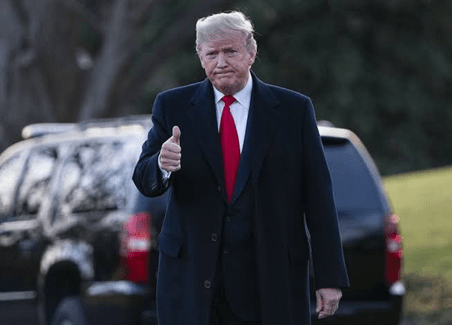President Donald Trump and Chinese Vice Premier Liu He are ready to enter into an initial trade deal to vastly increase Chinese purchases of US manufactured products, agricultural goods, energy and services. This will make US-China trade war to enter a quieter phase. The Phase One agreement caps 18 months of tariff conflict between the world’s two largest economies that has hit hundreds of billions of dollars in goods, roiling financial markets, uprooting supply chains and slowing global growth.
Trump has already begun touting the trade deal as a centrepiece of his 2020 re-election campaign, calling it “a big beautiful monster” at a rally in Toledo, Ohio last week.
Trump and Liu are scheduled to sign the 86-page document on Wednesday at a White House event before over 200 invited guests from business, government and diplomatic circles.
A translation of the text to Chinese was still being completed late on Tuesday, as Liu met with US Trade Representative Robert Lighthizer.
The centrepiece of the deal is a pledge by China to purchase an additional $US200 billion ($290 billion) worth of US goods over two years to cut a bilateral US trade deficit that peaked at $US420 billion in 2018.
The brief on the agreement portrays that China will purchase an additional $US80 billion worth of US manufactured goods over the two year period, including aircraft, autos and car parts, agricultural machinery and medical devices.
Beijing will boost energy purchases by some $US50 billion and services by $US35 billion, while agricultural purchases will get a $US32 billion lift over the two years, all compared to a 2017 baseline of US exports to China, as per the sources.
The deal could be a big boost to farmers, planemaker Boeing, US automakers and heavy equipment manufacturers, however, some analysts question China’s ability to divert imports from other trading partners to the US.
The deal contains no provisions to rein in rampant subsidies for state-owned enterprises and fails to address digital trade restrictions and China’s onerous cybersecurity regulations that have hobbled US technology firms in China.
Mnuchin and Lighthizer said these issues are key US priorities for Phase Two negotiations with China.
The deal contains no provisions to rein in rampant subsidies for state-owned enterprises and fails to address digital trade restrictions and China’s onerous cybersecurity regulations that have hobbled US technology firms in China.
Mnuchin and Lighthizer said these issues are key US priorities for Phase Two negotiations with China.
President Trump’s supporters nodded approvingly as Mr. Trump took the step to sign the “big, beautiful monster” of a trade deal.
The enthusiastic group, gathered at Toledo’s Huntington Center, nodded again as Mr. Trump insisted that America’s farmers, who have been hurt by the trade war with China were winners!
The optimism surrounding the outcome of the negotiations reflects the deep trust that Mr. Trump’s supporters have in a president who promised to stop China from “ripping off” the United States and has declared victory in reviving the terms of trade.





